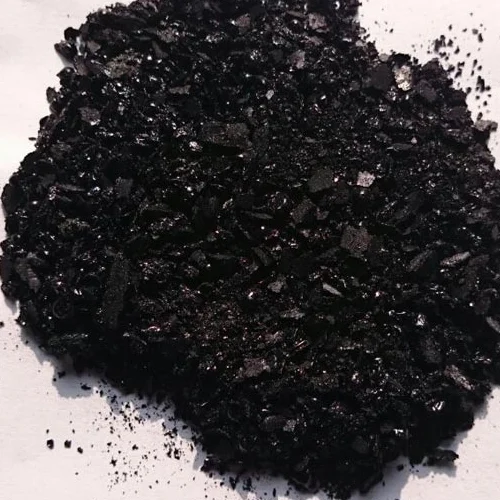Natural Indigo-Dyed Apparel for Sustainable Fashion Enthusiasts
The Allure of Indigo Dye in Clothing A Timeless Trend
In the world of fashion, color plays an essential role in defining styles, moods, and trends. Among the myriad hues, indigo stands out as a classic choice that has not only transcended time but has also become synonymous with tradition and craftsmanship. Indigo dye, derived from the leaves of the indigo plant, has a rich history that dates back thousands of years, making it one of the oldest dyes used for textiles. The resurgence of interest in sustainable and natural dyes has renewed the spotlight on indigo, encapsulating its charm in modern clothing.
The History of Indigo Dye
Indigo dyeing has a fascinating history that spans multiple cultures and continents. The use of indigo dates back to ancient civilizations, such as the Egyptians, Chinese, and Indians, who revered it for its deep blue color. In Japan, indigo dyeing, known as aizome, became a cultural staple, particularly in the production of traditional garments like the kimono. Communities developed their unique techniques, often involving complex dyeing processes that resulted in intricate patterns and textures, making indigo textiles highly coveted.
The dyeing process itself is a chemical marvel. Unlike many other dyes, which dissolve in water, indigo doesn't initially appear blue. Instead, it is a greenish-yellow pigment that requires a fermentation process, making it a participatory art form. Craftsmen immerse fabric in a vat of the reduced indigo solution, and through oxidation as the material is exposed to oxygen, a brilliant blue hue emerges. This transformation captures the labor and passion that goes into each piece of indigo-dyed clothing.
The Sustainable Choice
In recent years, sustainable fashion has gained tremendous momentum as consumers become more conscientious about their choices. This shift has positioned indigo-dyed clothing as an eco-friendly alternative to synthetic dyes, which often pollute water systems and involve harmful chemicals. Natural indigo is biodegradable and derived from a renewable source, making it a preferred choice for environmentally-aware shoppers.
Brands committed to sustainability have embraced indigo dyeing as part of their ethos. They often highlight the traditional practices passed down through generations, supporting artisan communities and promoting ethical fashion. By opting for indigo-dyed clothing, consumers not only make a fashion statement but also contribute to the preservation of ancient crafts and support local economies.
indigo dye clothes product

Fashion Statements and Versatility
Indigo-dyed clothing has a unique ability to blend both casual and formal elements. Denim, arguably one of the most iconic examples of indigo dye, has become a wardrobe staple across the globe. Its versatility allows it to transition seamlessly from a day at the office to a night out. Moreover, indigo has an incredible knack for aging gracefully; as it fades over time, it creates a personalized look that tells a story, enhancing its allure.
Beyond denim, indigo can be found in various fabric types and fashion styles, from flowing dresses to chic shirts and robust jackets. The rich blue tones can be paired effortlessly with other colors, making it a timeless choice. Designers have also explored shibori, a Japanese dyeing technique that incorporates various folding and binding patterns, which adds a modern twist to traditional indigo textile designs.
The Cultural Renaissance
As we continue to delve into the significance of indigo dye, it’s essential to recognize the cultural renaissance surrounding this art form. Fashion weeks and exhibitions frequently spotlight indigo as designers pay homage to its historic roots while incorporating contemporary aesthetics. The fusion of tradition and modernity in indigo-dyed clothing serves as a reminder of the rich tapestry of cultural exchanges that shape our global fashion landscape.
Moreover, workshops and classes focusing on indigo dyeing have emerged, allowing enthusiasts to engage firsthand with this ancient craft. Participants learn how to create their dye vats, experiment with various fabrics, and develop their patterns—a hands-on approach that deepens appreciation for the artistry involved.
Conclusion
Indigo-dyed clothing is more than just a trend; it’s a celebration of history, craftsmanship, and sustainability. As consumers navigate the complexities of modern fashion, the resurgence of indigo serves as a reminder of the beauty found in tradition. Whether it's through the iconic indigo denim or intricately dyed artisanal textiles, the deep hues of indigo continue to captivate hearts and dress bodies, embodying both timeless elegance and contemporary style. In an ever-evolving fashion landscape, indigo stands as a beacon of heritage, sustainability, and artistic expression, ensuring its place in wardrobes around the world for generations to come.
-
The Timeless Art of Denim Indigo Dye
NewsJul.01,2025
-
The Rise of Sulfur Dyed Denim
NewsJul.01,2025
-
The Rich Revival of the Best Indigo Dye
NewsJul.01,2025
-
The Enduring Strength of Sulphur Black
NewsJul.01,2025
-
The Ancient Art of Chinese Indigo Dye
NewsJul.01,2025
-
Industry Power of Indigo
NewsJul.01,2025
-
Black Sulfur is Leading the Next Wave
NewsJul.01,2025

Sulphur Black
1.Name: sulphur black; Sulfur Black; Sulphur Black 1;
2.Structure formula:
3.Molecule formula: C6H4N2O5
4.CAS No.: 1326-82-5
5.HS code: 32041911
6.Product specification:Appearance:black phosphorus flakes; black liquid

Bromo Indigo; Vat Bromo-Indigo; C.I.Vat Blue 5
1.Name: Bromo indigo; Vat bromo-indigo; C.I.Vat blue 5;
2.Structure formula:
3.Molecule formula: C16H6Br4N2O2
4.CAS No.: 2475-31-2
5.HS code: 3204151000 6.Major usage and instruction: Be mainly used to dye cotton fabrics.

Indigo Blue Vat Blue
1.Name: indigo blue,vat blue 1,
2.Structure formula:
3.Molecule formula: C16H10N2O2
4.. CAS No.: 482-89-3
5.Molecule weight: 262.62
6.HS code: 3204151000
7.Major usage and instruction: Be mainly used to dye cotton fabrics.

